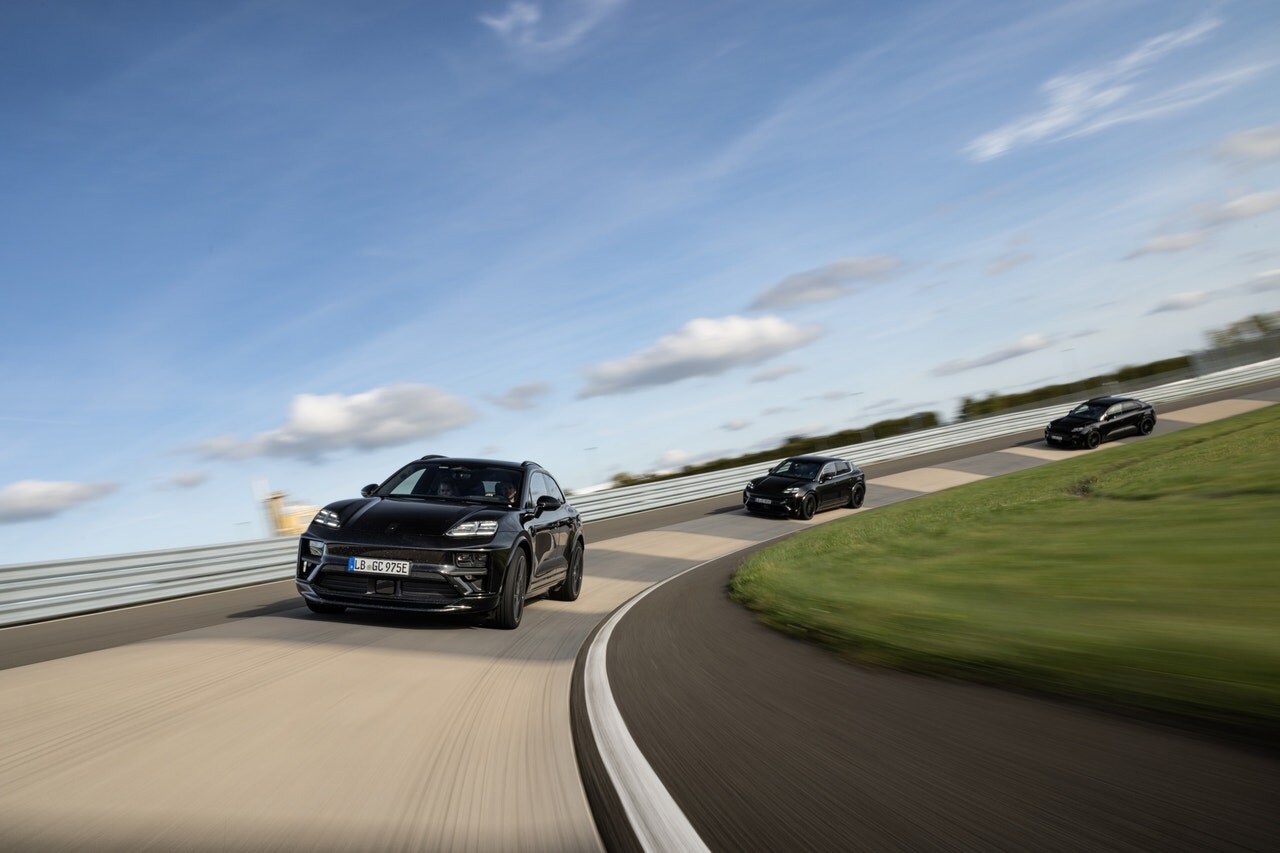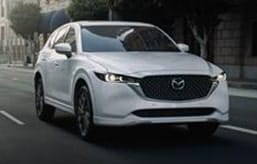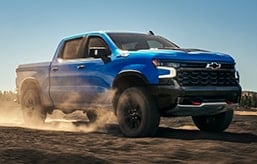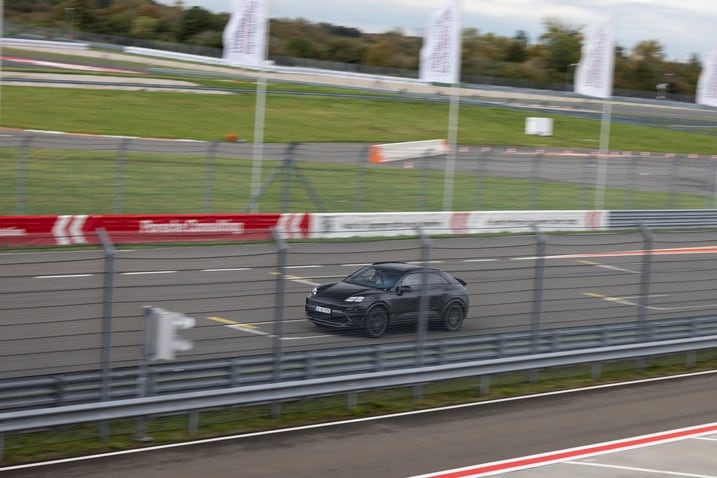- Porsche’s electric Macan is the first model to be based on the new PPE platform.
- The most potent version of the crossover EV will make 603 horsepower and more than 737 lb-ft of torque.
- It’s got a 100-kWh battery pack that's lighter and has more capacity than the unit in the Taycan, which should improve range.
- Despite the added weight gained in the move to electric, the new Macan EV is still viciously sharp and performative.
Porsche’s Electric Macan Is a Big Step Forward From the Taycan
It’s also brutally capable around a racetrack, even though it doesn’t need to be
Porsche has been talking about its Macan crossover going electric for nearly five years. While we still haven't seen it in its fully unveiled, ready-for-production form yet, we now know a whole lot more about it, thanks to a technical workshop that Porsche recently held at its Leipzig, Germany, production facility, where the Macan and Panamera are built.
The 2024 Macan EV — which doesn't have a distinct model name; Porsche is simply calling it the "Macan" — is the first vehicle to be produced on the PPE (Premium Platform Electric) 800-volt architecture that Porsche will share with its sister brand, Audi. This new platform promises to add considerably more range than we've seen thus far from models like the EV-only Porsche Taycan, and that's a good thing because if the Taycan has a technical weakness, it's range.
Am I Ready for an EV?
- EV ownership works best if you can charge (240V) at home or at work
- If you can’t charge at home, charging at a charging station could take at least 10x longer than at a gas station
- Adding a 240V home charging system could cost up to $1,600 or more
Improved battery tech
Porsche's engineers wouldn't expound really on how much more range we could expect, but as long as it can beat the Taycan's current max EPA estimate of 246 miles (though in our real-world testing, we were able to beat the 203-mile EPA estimate for the Taycan 4S by an incredible 120 miles), it will be golden.
The new battery pack design offers 100 kWh of capacity (slightly larger than the Taycan's 93-kWh optional upgrade), but thanks to a new battery chemistry with a ratio of eight parts nickel to one part each cobalt and manganese, the number of prismatic cells and the size and weight of the pack are less than you'd think. Porsche touts a 30% increase in energy density, which means the pack can be smaller for the given capacity, and a smaller pack means less weight, which means better driving dynamics and range, among other benefits. Porsche quotes a weight of 1,257 pounds (570 kilograms) for the pack. For context, the Taycan's optional pack has less capacity and weighs 1,389 pounds (630 kg).
That new pack can take up to a 270-kilowatt DC fast charge, and if conditions are ideal, the electric Macan can charge from 10% to 80% in under 22 minutes. Obviously, these are claims on Porsche's part, and ideal conditions can be hard to come by, particularly with America's less-than-perfect charging infrastructure, but it's still impressive. The Macan's onboard AC charger is good for up to 11 kilowatts.
While range tends to dominate the conversation when it comes to electric vehicles, it's not the only thing worth considering. Performance is important, too, and Porsche, a brand that built its temple, brick by brick, on sports and performance vehicles, takes that pretty seriously. To that end, the most performative version of the new Macan EV will pack an output of 603 horsepower and "more than 737 pound-feet" of torque. In a world where the Lucid Air Sapphire offers up 1,234 hp, that doesn't sound like much, but after sitting in the passenger seat on a demo drive, I assure you, it's plenty.
Cracking the whip
Porsche took me on a pair of test loops at its Leipzig Experience Center to demonstrate the capabilities of the drivetrain, chassis and suspension. The first was an off-road course, complete with hellacious inclines and a worryingly deep water crossing. That the Macan in any guise can handle itself off-road isn't a surprise, but the fact that the EV is so well-suited to it was — not that many of them will ever see dirt, of course.
Next, Porsche put me in the passenger seat of a Macan EV test mule with one of its development drivers. Having done several of these kinds of right-seat ride-alongs, my expectation was that the driver would do a hard launch — it's a performance EV, after all — and then a brisk couple of laps around the track. That isn't, strictly speaking, what I got.
Porsche's Leipzig facility is unique among Porsche's other Experience Centers because of its size and layout, which features re-creations of some of the world's greatest racetracks' most famous features. It's a technical and demanding circuit, and our test driver showed no mercy to neither us nor the Macan mule in which we were riding. As expected, the initial hard launch was explosive and felt somewhere in the 3-seconds-to-60 range. There is nothing surprising there because all EVs feel quick in a straight line, but after that, all bets were off.
We got a total of three laps: one out lap, a hot flying lap and a cooldown lap. The out lap didn't have a lot of easy warming up because, despite ambient temperatures in the low 40s, my driver hit the track like he'd had tire blankets on all morning. The speed with which the Macan EV was able to corner is deeply impressive, with that mountain of grip throwing me into the seat bolsters and forcing me to brace against the footwell with all my strength. Then he started to slide the Macan around and here is where I almost lost my perfectly lovely German breakfast.
The transition from huge, high-speed powerslides to flat-foot corner exits to hard threshold braking at corner entrance was among the most violent I've ever felt. It was awesome, but I quickly found myself concentrating hard on just breathing and trying not to ruin the interior of this perfectly nice test mule. This peaked during the full four-wheel drift up, over and down the track's re-creation of Laguna Seca's famed Corkscrew corner. I'll never look at crossovers or even EVs the same again.
From an architectural standpoint, the Macan is similar to most other electric vehicles. The battery pack sits low, underneath the passenger compartment, and Porsche's bespoke electric motors sit at either end. Given the weight of the battery pack, air suspension is definitely on the menu, and it appears to be similar to the system we've seen on the current-generation Cayenne, which is promising for on-road dynamics. The Macan will also have four-wheel steering capability, though whether this will be standard or an option (as is Porsche's typical M.O.) remains to be seen.
During the many presentations and keynote speeches we sat through in Leipzig, the throughline is that the electric Macan represents Porsche's future, but that future has no room for vehicles that don't drive like true Porsches. Based on this experience, I can say that there's no fear of the latter where this new battery-electric Macan is concerned.
Edmunds says
It’s been a long wait for the electric Macan, and now that the end is in sight, we’re finding that for those buyers clamoring for a truly quick, sharp and practical electric crossover, the Macan EV might just be what Herr Doktor ordered. With a familiar exterior and an excellent interior that closely mirrors the newest Cayenne SUV and conveniences like dual charge ports, this should make the barrier to EV adoption lower than it's ever been for Porschephiles.






_175.jpg) by
by